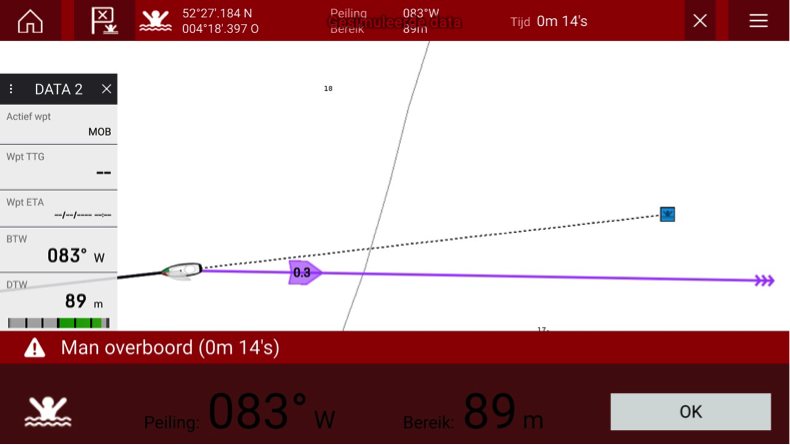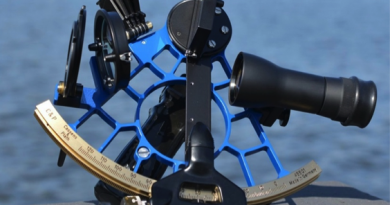RYA-tips #42 – MOB function on chartplotters
Zeilen is een combinatie van wetenschap en kunst. En voor wie daar meer over wilt weten schrijft Albert De Nijs, instructeur bij de De Zeezeilers van Marken wekelijks een rubriek met tips&trics van de Royal Yachting Association.

In a MOB situation, the first action is to stop the boat and stay close to the person in the water.
Keeping him/her in sight dramatically increases the chances of a successful outcome. Organize your mind, crew and boat and mark the position in the water (danbuoy, horse shoe buoy).
Somewhere in the next steps comes pressing the chartplotters MOB button and making a MAYDAY call on VHF. That makes perfect sense if you have spare crew to nip downstairs. Shorthanded this can be a challenge. If you have to leave the cockpit for this, you might very well lose your orientation.
A MAYDAY call alerts the Coastguard and vessels in your vicinity, but should preferably be done from the cockpit keeping your eyes on the person in the water. A DSC-alert is quicker to send than the full MAYDAY procedure.
Pushing the MOB button on your chartplotter creates a waypoint, and the plotter continuously shows your position relative to this MOB waypoint. This waypoint is geographically fixed, and its function guides you to the Lat/Lon where you pushed the button. This is useful as datum to start searching, but tidal set and leeway drift will affect the location of the person in the water.
Some plotter software contains basic SAR patterns. To use them, you first have to cancel the MOB function. You lose the MOB waypoint, create a new waypoint and activate a search pattern. Again, these patterns are ground-based, with the victim in moving water. With a tidal vector of 2 kts and 20 kts wind the MOB moves up to 360m in 5 minutes!
Coastguard organisations use sophisticated programs to establish search areas. The SAR units apply search patterns depending on the situation. When the MOB position is known a datum search is carried out, when the position is unknown an area search is performed. These patterns are based on heading and time, so the pattern ‘automatically’ moves with the (person in the) water.
Every MOB situation will be different, so its not useful to give hard and fast rules. Shorthanded, I would prefer to focus on the man in the water, get slow, close and organized as quickly as possible and start recovery. If struggling, press the DSC-alarm and MOB button.
Some highly integrated chartplotter-DSC radio systems automatically send a DSC-alert when the MOB button is pushed. Something to be aware off when practicing the full procedure!
Albert de Nijs, Dutch Offshore Sailing Academy



